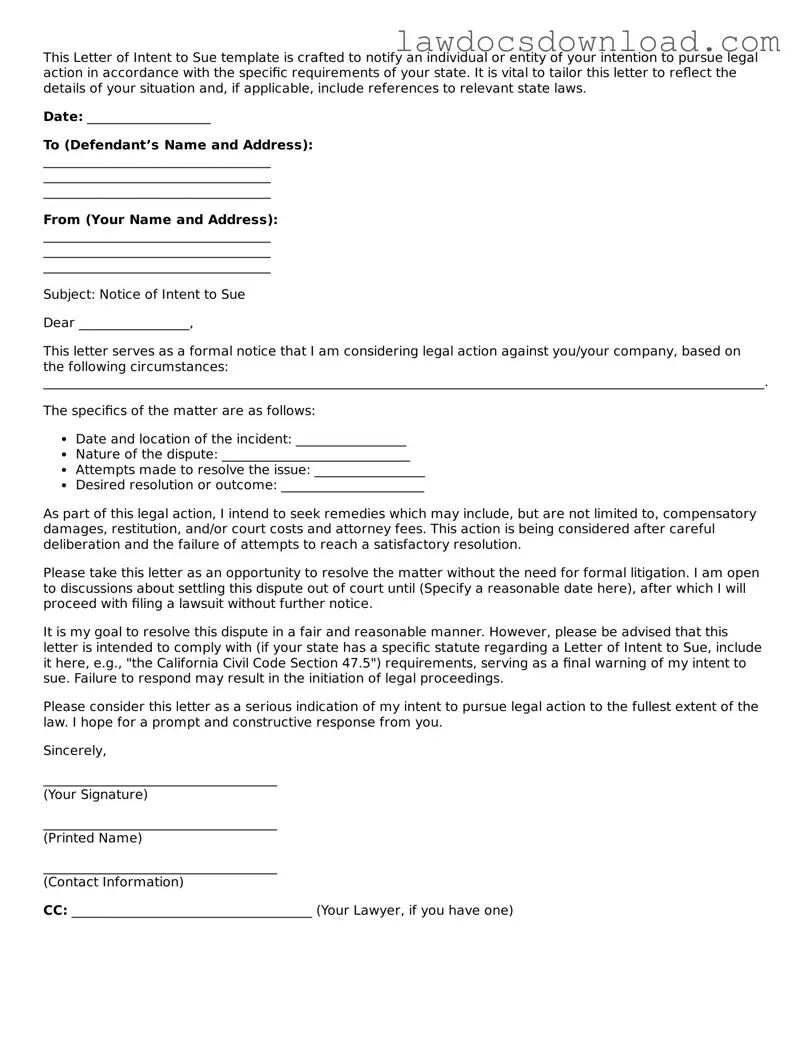This Letter of Intent to Sue template is crafted to notify an individual or entity of your intention to pursue legal action in accordance with the specific requirements of your state. It is vital to tailor this letter to reflect the details of your situation and, if applicable, include references to relevant state laws.
Date: ___________________
To (Defendant’s Name and Address):
___________________________________
___________________________________
___________________________________
From (Your Name and Address):
___________________________________
___________________________________
___________________________________
Subject: Notice of Intent to Sue
Dear _________________,
This letter serves as a formal notice that I am considering legal action against you/your company, based on the following circumstances: _______________________________________________________________________________________________________________.
The specifics of the matter are as follows:
- Date and location of the incident: _________________
- Nature of the dispute: _____________________________
- Attempts made to resolve the issue: _________________
- Desired resolution or outcome: ______________________
As part of this legal action, I intend to seek remedies which may include, but are not limited to, compensatory damages, restitution, and/or court costs and attorney fees. This action is being considered after careful deliberation and the failure of attempts to reach a satisfactory resolution.
Please take this letter as an opportunity to resolve the matter without the need for formal litigation. I am open to discussions about settling this dispute out of court until (Specify a reasonable date here), after which I will proceed with filing a lawsuit without further notice.
It is my goal to resolve this dispute in a fair and reasonable manner. However, please be advised that this letter is intended to comply with (if your state has a specific statute regarding a Letter of Intent to Sue, include it here, e.g., "the California Civil Code Section 47.5") requirements, serving as a final warning of my intent to sue. Failure to respond may result in the initiation of legal proceedings.
Please consider this letter as a serious indication of my intent to pursue legal action to the fullest extent of the law. I hope for a prompt and constructive response from you.
Sincerely,
____________________________________
(Your Signature)
____________________________________
(Printed Name)
____________________________________
(Contact Information)
CC: _____________________________________ (Your Lawyer, if you have one)
